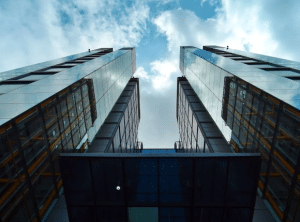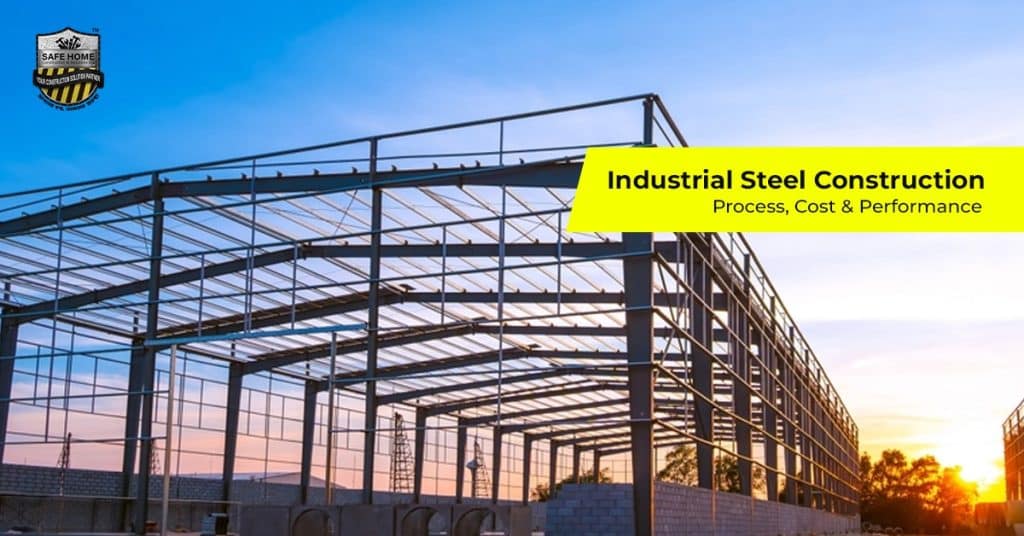Introduction: Steel Construction Overview
Bangladeshi industries are rapidly growing for strong, durable, and cost-efficient construction methods. Among the different options, the Industrial Steel Construction Process has gained popularity because of its speed, flexibility, and long-term performance benefits. Unlike traditional RCC methods, steel structures provide industries with a modern approach that is both sustainable and efficient.
Industrial Steel Construction Process in BD
Steel construction is increasingly being used in factories, warehouses, power plants, and manufacturing units because it offers unmatched load-bearing capacity, faster erection time, and flexibility for future expansions. In this article, we will explore the step-by-step industrial steel construction process in Bangladesh is below:
Step 1 – Planning & Design
- Define Industrial Requirements: Every steel project begins with understanding the industrial needs—factory layout, warehouse capacity, or plant setup.
- Load Calculation & Structural Design: Engineers calculate load capacity, wind resistance, and seismic strength to ensure safety.
- Steel Structure Architecture: Detailed architecture ensures efficient use of materials while maintaining durability and aesthetics.
- Approval & Compliance: The design stage includes obtaining regulatory approvals and aligning with industrial safety standards.
Step 2 – Site Preparation & Foundation
- Soil Testing & Surveying: Engineers conduct soil tests to determine load-bearing capacity and foundation requirements.
- Land Leveling & Clearing: The land is leveled, debris removed, and the site prepared for foundation work.
- Foundation with Anchor Bolts: Heavy-duty anchor bolts are installed to connect the steel frame securely to the ground.
- Strong Base Importance: A solid foundation ensures the stability and longevity of heavy industrial structures.
Step 3 – Steel Fabrication
- Manufacturing Beams & Columns: Steel components such as beams, trusses, and columns are fabricated in specialized factories.
- Quality of Steel in Construction: High-grade steel is used to maintain structural integrity and meet international standards.
- Precision Engineering: CNC cutting, drilling, and welding ensure exact dimensions for easy assembly on-site.
- Testing & Inspection: Each fabricated component undergoes strict quality checks before delivery.
Step 4 – Steel Frame Erection
- Column Placement: Heavy columns are lifted and fixed onto the foundation anchor bolts.
- Beam Connections: Beams are connected using welding and bolting to form the steel framework.
- Safety Protocols: Industrial safety standards are followed to prevent accidents during erection.
- Structural Stability: The frame is aligned and secured for long-lasting industrial use.
Step 5 – Roofing & Cladding
- Roof Sheets & Panels: Corrugated sheets or insulated sandwich panels are installed for roofing.
- Wall Systems & Cladding: Steel wall panels provide thermal insulation and weather resistance.
- Weather Protection: Proper cladding safeguards machinery and workers from harsh climate conditions.
- Aesthetic Finishing: Modern steel architecture gives industries a smooth and aesthetic look.
Step 6 – Utilities & Finishing Works
- Electrical Installations: Power distribution systems, lighting, and automation setups are added.
- Fire & Safety Systems: Fire alarms, extinguishers, and emergency exits ensure safety compliance.
- HVAC Setup: Ventilation, heating, and cooling systems improve working conditions.
- Painting & Coatings: Anti-corrosive paints and protective coatings increase steel durability.
Cost of Industrial Steel Construction in Bangladesh
The cost of industrial steel construction in Bangladesh depends on materials, design, and logistics. It may cost 2000-3200 taka per square depending on your work. Steel structure ensures faster builds, durability, and long-term savings, making a smarter investment. 
- Quality of Steel Materials: Higher-grade steel improves strength but increases cost.
- Design Complexity: Customized architectural designs add to overall expenses.
- Location & Transportation: Remote sites increase logistics and transportation costs.
- Labor & Equipment: Skilled labor and modern equipment affect project pricing.
- Comparison with RCC: Steel is faster to build and offers lower maintenance than RCC.
- Long-Term Savings: Durability, low repair costs, and energy efficiency make steel more cost-effective in the long run.
Performance & Advantages of Industrial Steel Construction
- Strength & Load-Bearing: Steel provides superior strength for heavy machinery and loads.
- Faster Works: Prefabricated components allow faster assembly compared to traditional methods.
- Durability & Safety: Resistant to fire, pests, and corrosion, steel ensures long-lasting safety.
- Flexibility & Expansion: Easy to modify and expand as industries grow.
- Eco-Friendly Construction: Steel is recyclable and reduces environmental impact.
Why Choose Safe Home for Industrial Steel Construction?
- Experience in Mega Projects: Proven record of handling industrial projects across Bangladesh.
- Certified Quality Materials: Only high-grade, tested steel is used in every construction.
- On-Time Project Complete: Projects are completed within strict deadlines without compromising quality.
- Expert Engineering Team: Skilled professionals ensure safety, performance, and durability.
Conclusion
The Industrial Steel Construction Process is shaping the future of Bangladesh’s industrial infrastructure. With unmatched strength, faster timelines, and long-term cost benefits, steel construction offers industries a sustainable and future-ready solution. Choosing experts like Safe Home Construction ensures reliable project execution, world-class materials, and superior performance.
For industries planning to build factories, warehouses, or plants, steel construction is the smartest investment for growth and durability. Contact Safe Home Construction today and take the first step toward building a strong industrial future.
FAQ on Steel Construction in Bangladesh
- How long is the Average Lifespan of Steel Buildings in Bangladesh?
A well-built industrial steel structure can last 50–70 years with proper maintenance. It depends on your structure. - Is industrial steel construction more cost-effective than concrete (RCC)?
Yes, steel construction is faster, more durable, and often cheaper in the long run compared to traditional RCC buildings. - Can steel structures be customized for different industries, like factories or warehouses?
Steel structures are highly flexible and can be designed to meet the specific needs of factories, warehouses, or industrial plants. - What factors affect the cost of industrial steel construction?
Key cost factors include steel quality, design complexity, site location, labor, and transportation of heavy steel materials. - Are steel buildings safe against fire, earthquakes, and cyclones?
Yes, steel buildings are engineered with fireproofing, seismic resistance, and wind load capacity for safety in tough climates. - Can an industrial steel building be expanded or modified in the future?
Steel structures allow easy expansion and modifications, making them ideal for growing businesses and industrial facilities.

